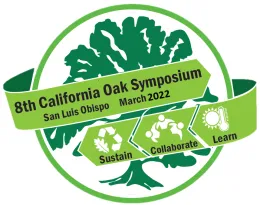Past, Present and Future Fire Regimes in California Oak Communities

Jon E. Keeley, U.S. Geological Survey, Western Ecological Research Center, Sequoia-Kings Canyon Field Station
Dawn M. Lawson, Biology Department, San Diego State University, San Diego, CA
Quercus is an important component of fire-prone woodlands, savannas and shrublands. With respect to fire, species represent both conservative retention of some traits and adaptive radiation of others. All produce short-lived fire-sensitive acorns and recruitment is not closely tied to fire, although fire may release advanced seedling banks from competition. All species resprout; shrubs and tree seedlings/saplings resprout from the basal crown and rhizomes and arborescent forms resprout epicormically from crown-fire scorched stems. Arborescent species have thick bark that provides cambial protection from understory burns whereas shrubs that have radiated into crown-fire shrublands have thin bark. Even among arborescent species there is marked radiation in fire-adaptive traits such as self-pruning of dead branches. Complicating understanding fire responses is the evidence that some species such as Q. douglasii often dominate savanna habitats that are thought to be an artifact of anthropogenic burning that has replaced their natural shrub associates with non-native grasses. Fire frequency has declined over time due as much to grazing reducing herbaceous as to suppression increasing fuels. All woodland species benefit from low intensity surface fires but are surprisingly persistent in the face of high intensity crown fires. In some communities fires may play a role in reducing conifer competition. On state protected lands in California since the middle of the last century woodlands have constituted around a third of the area burned in the northern portion of the state but less than 10% in the southern part of the state. This century has experienced years of exceptional woodland burning many times greater than in the earlier part of the record, potentially tied to fuel accumulation, climate change and increased threat of ignitions due to population growth. Fire management requires balancing predicted increases in droughts, invasive species altering fuels, grazing and the ever-increasing expansion of the wildland-urban interface.
